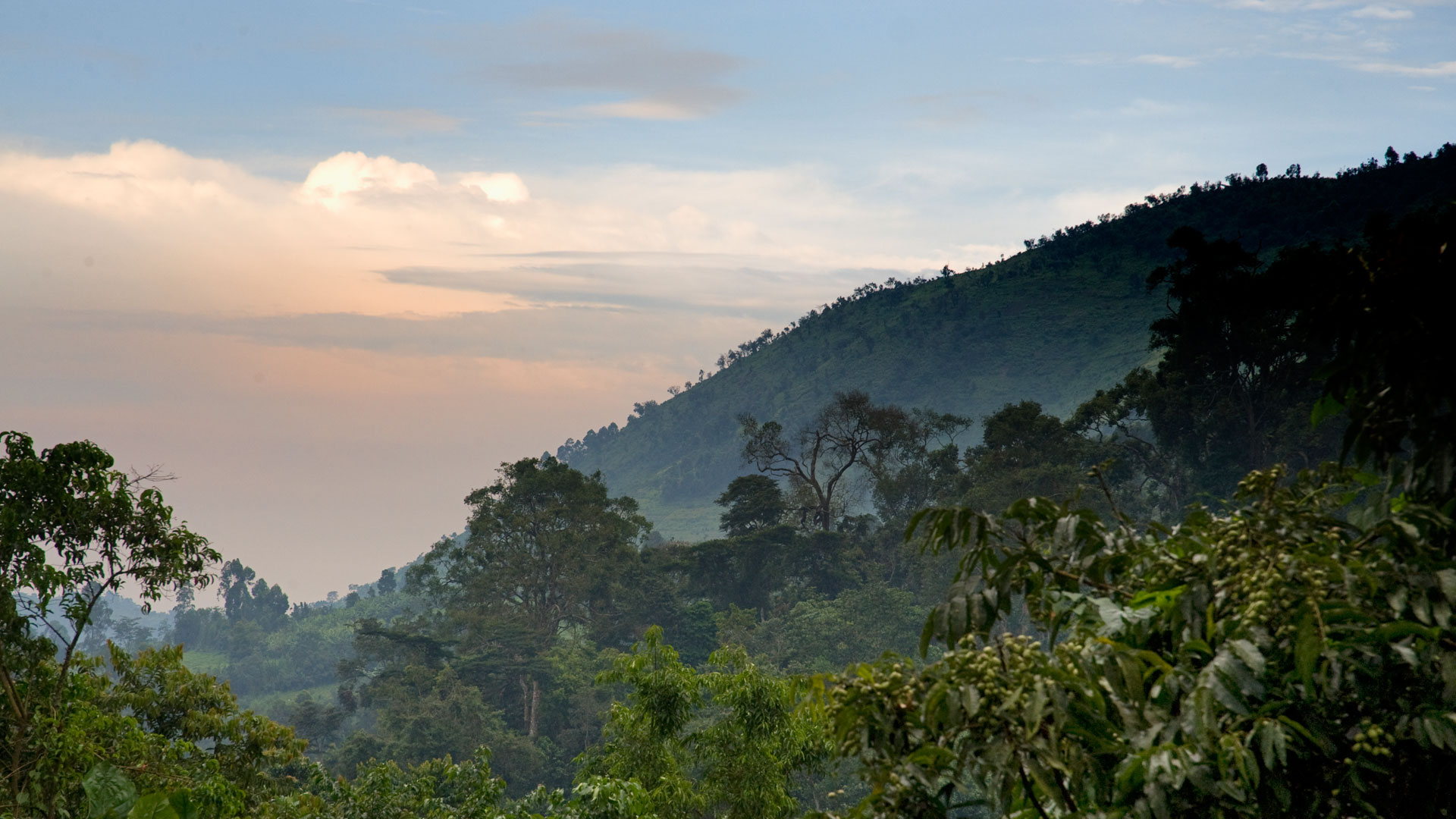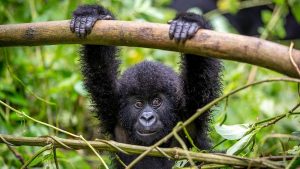Bwindi Impenetrable Forest National Park – Bwindi Forest Guide
Bwindi Impenetrable Forest National Park is located in the southwestern part of Uganda, in Kanungu District. Bwindi National Park is part of the typical dense tropical rain forest, Bwindi Impenetrable Forest that is situated along the Border of Uganda and Democratic Republic of Congo, next to the Virunga National Park and on the edge of the Albertine Rift Valley.

Bwindi Impenetrable National Park is composed of a total land area of 331 square kilometers (approximately 128 square miles) of both montane and lowland forest that are accessible only on foot. Bwindi Impenetrable National Park was established in in 1991and was designated a UNESCO world heritage site in 1994.
What is Bwindi National Park famous for?

Bwindi Impenetrable National Park is remarkably famous for habituating more than a half of the total population of the remaining endangered mountain gorillas, more than 400 gorillas live in Bwindi, that are further divided to over 10 family groups.
The most endangered primate species, the mountain gorillas, have a total population in the world is approximated at around 1,000 individuals. Apart from the chimpanzees, the mountain gorillas are also the human’s closest relatives with them sharing up to 98% of the DNA genetic code with humans.
Bwindi Impenetrable National Park that covers the Bwindi Impenetrable Forest is a home to more than 160 species of trees and also habituates over 100 species of ferns. The predominant activity in the National Park is Gorilla Trekking which is an awesome activity that will offer a great opportunity to see the large primates in their natural habitats.
Why Bwindi is called Impenetrable?
The name Impenetrable comes from the extensive stands of bamboo interspersed amongst the larger forest hardwoods. The bamboo and thick ground cover of ferns, vines, and other plant growth severely hinder direct access on foot, thus Impenetrable.
Attractions in Bwindi Impenetrable Forest National Park
Apart from the mountain gorillas, Bwindi is also a home to other forms of wildlife, with more than 120 mammal species, but most of these are small forest creatures. Elephant are also present, although they are rarely seen. More regularly encountered are bushbuck and several types of duiker. Butterflies are something of specialty in Bwindi with impressive list of 220 species including the rare three species that can only be found in the park. The park is also famous for hosting hoest’s monkey, black and white colobus monkeys that habituate the dense bamboo forest.
Birds in Bwindi Impenetrable National Park – the park is a home to over 320 bird species with the most encountered including; Western Green Tinker bird, African Wood Owl, Archer’s Robin-chat, Red-throated Alethe, Fine banded Woodpecker, Grauer’s Rush Warbler, Handsome Francolin, Chestnut-throated Apalis, Regal Sunbird, Collared Apalis, Montana Oriole, Flycatcher and African Green Broadbill, Great Blue Turaco Shelley’s Crimsonwing, Green Breasted Pitta, short tailed warbler, standard winged Nightjar, and many more live here.
Activities in Bwindi Impenetrable National Park
Gorilla Trekking – Bwindi Impenetrable National Park is home to some of the world’s endangered mountain gorillas making gorilla trekking a must do activity while at the park. Gorilla trekking offers the real African wilderness where you will see the large primates in their habitats, with their young ones. A trek in Bwindi may last for 1 to 3 hours depending on the side the gorillas may have moved.
Are mountain Gorillas dangerous?
Despite Mountain gorillas being large, they are generally shy, gentle and peaceful in nature. Mountain gorillas are vegetarian in nature a main reason as to why they live in densely forested areas and spend most of their time in the jungle eating. However mountain gorillas are muscular, intelligent and strong and can be trained and they can get very close to humans.
On rare occasions however mountain gorillas can become of great threat most especially when one disturb say their territories and when they charge, the react in an aggressive way with vigorous bites, thumping, breaking ribs, dragging and if the person is not rescued in time it may lead to loss of life. Tourists are however always required to keep a seven meter distance while with the gorillas and should not touch the gorilla.
Birding – the park is a home to over 320 bird species with the most encountered including; Western Green Tinker bird, African Wood Owl, Archer’s Robin-chat, Red-throated Alethe, Fine banded Woodpecker, Grauer’s Rush Warbler, Handsome Francolin, Chestnut-throated Apalis, Regal Sunbird, Collared Apalis, Montana Oriole, Flycatcher and African Green Broadbill, Great Blue Turaco Shelley’s Crimsonwing, Green Breasted Pitta, short tailed warbler, standard winged Nightjar, and many more live here, thus birding is a must do activity in the park.
Hiking and forest walks – is one of the major highlights of Bwindi Impenetrable National Park. Hiking and Forest walks in Bwindi have developed trails in the park where you can have a great chance to explore and learn of the forest. The Munyaga River trail is the most famous and takes travellers to the waterfalls in the park.
Mountain Biking – the mountain Biking is best done from the Buhoma sector and gives a best biking experience while riding through the mountains.
Batwa Cultural Experience – get relieved with the Batwa cultural experience where you can participate in their cultural practices. The Batwa are the primary occupants of the Bwindi Impenetrable Forest before they were evicted and displaced to the area near the park where they are referred to as squatters.
